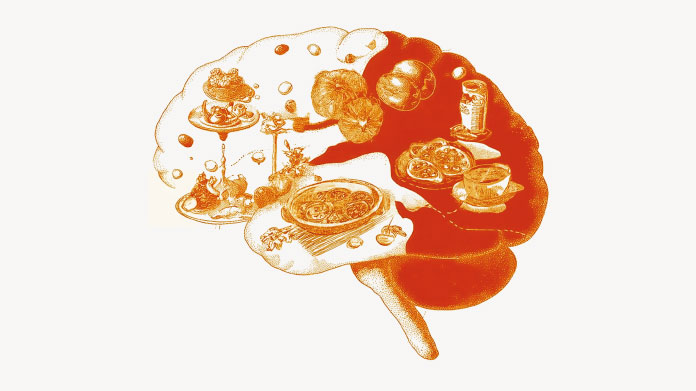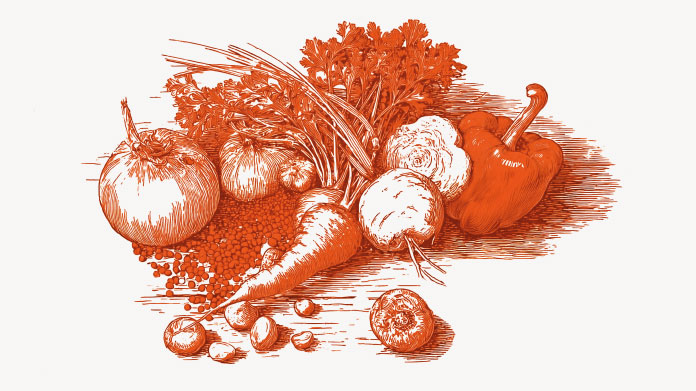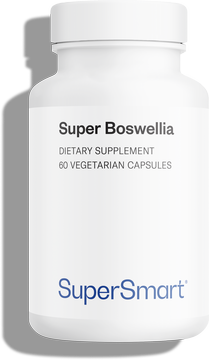Chrononutrition: 3 great recipe options for each meal of the day
Have you heard of chrononutrition, the approach to eating that’s matched to the body’s circadian rhythms? Here are 3 ready-made recipe options for successfully implementing the chrononutrition approach across the day’s meals.

Recap: what is chrononutrition?
Popularised by Dr Alain Delabos, chrononutrition is all about aligning your food intake with your internal clock. The principle is simple: if you eat at the right time, the food will be optimally absorbed physiologically.
Often described as a slimming diet, chrononutrition is more accurately an overall approach to food rebalancing. It can support you in shedding excess pounds (1) just as it can help you get back to a healthy weight after unplanned weight loss.
In addition, by synchronising your meals with the release of digestive enzymes, it may have a positive effect on regulating your cholesterol and blood sugar levels (2-3). All without imposing any real restrictions on what you eat! No food is off limits as long as you eat it at the right time (and in reasonable quantities).
Though attractive on paper, chrononutrition is not, however, for everyone. With an emphasis on meat products, it is not, for example, designed for vegetarians, at least in its classic form. Indeed, the consumption of meat, charcuterie and saturated fats involved - excessive amounts of which are bad for the arteries and kidneys – exceeds recommended daily amounts by quite a margin (4-5). Neither are fruit and vegetables given much prominence.
To find out if this approach to eating is compatible with your particular state of health, talk to your doctor. He or she will be able to arrange a blood test (showing your blood fat and sugar levels, and uric acid ...) to flag up any potential contraindications.
What does a typical day’s eating look like?
In order to create your chrononutrition menu, it’s important to be aware of how our metabolism works … and the digestive secretions that control it.
When you get out of bed in the morning, it’s your body’s lipases, responsible for breaking down lipids, which are most active (6). This means breakfast is the best time to consume fat! Butter, cheese, eggs and cooked meats are all allowed, accompanied perhaps by some complex carbohydrates (such as bread).
At lunchtime, it’s the turn of the proteases (which break down proteins) and amylases (which break down starch) (7-8). So lunch should ideally be based around a single dish that includes animal-source products (red meat, poultry, fish…) and starchy foods (pasta, rice, potatoes…), with a small amount of cooked vegetables to complete the meal.
Blood pancreatic hormone levels peak mid-afternoon so that’s the time to indulge your sweet tooth (9) ! Good choices include fresh or dried fruit, compotes, dark chocolate, or honey, with some nuts or oleaginous fruits (almonds, walnuts, avocado ...). And the occasional biscuit is also allowed!
In the evening, the digestive system slows down so it’s best not to overload your body with a heavy dinner (10-11). Eat lightly, choosing, for example, a combination of fish (or seafood) and cooked vegetables.
Putting it into practice: our ready-made chrononutrition recipes
According to Dr Delabos, the amount of food you should eat depends more specifically on your basic morphology (or morphotype). This comprehensive classification takes into account various measurements such as weight, height, chest size, hip circumference and wrist size.
As a general guide, we’ve suggested here some standard menus which incorporate the method’s main principles, but which can be modified depending on your objectives.
Breakfast:
Recipe 1: 1 slice of sourdough + 10g of butter + 50g of comté + 1green tea without sugar
Recipe 2: Omelette (made with 2 eggs + 1 slice of cooked ham + 40g of Emmenthal) + 2 seed crackers + 1 black tea without sugar
Recipe 3: 2 tbsp chia seeds + 125ml unsweetened almond milk (left to soak overnight) + a few slices of avocado + 1 rooibos tea without sugar
Lunch:
Recipe 1: 1 rump steak + 200g sautéd potatoes (garlic parsley, olive oil)
Recipe 2: 1 chicken breast + 80g of semi-wholewheat pasta + a few green olives
Recipe 3: 50g of lentils + 60g of wholegrain rice + 2 tbsp de onion fondue
Tea:
Recipe 1: 1 tea sweetened with 1 tsp of honey + 3 dried figs + 5 walnut kernels
Recipe 2: 1 unsweetened tea + 2 squares of dark chocolate + 1 apple compote
Recipe 3: 1 tea sweetened with 1 tsp honey + 1 orange + pistachio chips
Dinner:
Recipe 1: 1 cod fillet + lemon juice + 200g of green beans with tomato
Recipe 2: 150g of peeled shrimps + 200g of vegetable stir-fry (mini-corn, soy bean sprouts, green and red peppers)
Recipe 3: 100g of marinaded tofu (turmeric, coriander, soy sauce) + 1 bowl of mesclun salad
Chrononutrition and dietary supplements: which products should you choose?
We’ve already mentioned dark chocolate: apart from the pleasure it gives, its cacao content provides a substantial amount of magnesium. This important mineral supports normal psychological function and good nervous system and muscle function (12-13). To increase your daily intake, you could consider taking a magnesium supplement (such as Magnesium Orotate, a highly-bioavailable form that’s very well tolerated by the gut).
Fruit and vegetables do not feature prominently in the chrononutrition approach yet they contain vitamins and minerals which the body cannot do without (14). So include them in lunch and dinner, and at the same time, benefit from a cutting-edge mineral-vitamin complex to boost your daily intake (the multivitamin Daily 3 offers a truly comprehensive and formulation with 42 carefully-chosen ingredients including 12 vitamins, 8 minerals and various phytonutrients).
One of the oldest medicinal spices in the world, fenugreek seeds have a soothing effect on the digestive system by supporting, in particular, lipid and glucose metabolism as well as appetite control (15-16). A common ingredient in Indian curries, fenugreek seeds also feature in innovative supplements (such as Digestive Enzymes, a collection of 15 enzymes such as lactase plus plant extracts with digestion-enhancing properties).
Are you looking to chrononutrition to help you slim down? Popular in India for thousands of years, coleus forskohlii is the perfect slimming aid to support your efforts as it plays a role in weight loss and fat metabolism (17). You can obtain its benefits from exceptional synergistic supplements (such as Advanced Fat Burner, a super-powerful formulation that includes coleus, green coffee and garcinia, amongst others).
References
- Mazri FH, Manaf ZA, Shahar S, Mat Ludin AF, Abdul Basir SM. Development and Evaluation of Integrated Chrono-Nutrition Weight Reduction Program among Overweight/Obese with Morning and Evening Chronotypes. Int J Environ Res Public Health. 2022;19(8):4469. Published 2022 Apr 7. doi:10.3390/ijerph19084469
- Oda H. Chrononutrition. J Nutr Sci Vitaminol (Tokyo). 2015;61 Suppl:S92-4. doi: 10.3177/jnsv.61.S92. PMID: 26598903.
- Katsi V, Papakonstantinou IP, Soulaidopoulos S, Katsiki N, Tsioufis K. Chrononutrition in Cardiometabolic Health. J Clin Med. 2022;11(2):296. Published 2022 Jan 7. doi:10.3390/jcm11020296
- Maki KC, Dicklin MR, Kirkpatrick CF. Saturated fats and cardiovascular health: Current evidence and controversies. J Clin Lipidol. 2021 Nov-Dec;15(6):765-772. doi: 10.1016/j.jacl.2021.09.049. Epub 2021 Oct 1. PMID: 34649831.
- Maki KC, Dicklin MR, Kirkpatrick CF. Saturated fats and cardiovascular health: Current evidence and controversies. J Clin Lipidol. 2021 Nov-Dec;15(6):765-772. doi: 10.1016/j.jacl.2021.09.049. Epub 2021 Oct 1. PMID: 34649831.
- Samra JS, Clark ML, Humphreys SM, Macdonald IA, Matthews DR, Frayn KN. Effects of morning rise in cortisol concentration on regulation of lipolysis in subcutaneous adipose tissue. Am J Physiol. 1996 Dec;271(6 Pt 1):E996-1002. doi: 10.1152/ajpendo.1996.271.6.E996. PMID: 8997217.
- Ward OP. Proteases. Comprehensive Biotechnology. 2011;604-615. doi:10.1016/B978-0-444-64046-8.00187-7
- Akinfemiwa O, Muniraj T. Amylase. [Updated 2021 Jul 31]. In: StatPearls [Internet]. Treasure Island (FL): StatPearls Publishing; 2022 Jan-. Available from: https://www.ncbi.nlm.nih.gov/books/NBK557738/
- Imai S, Kajiyama S, Hashimoto Y, Nitta A, Miyawaki T, Matsumoto S, Ozasa N, Tanaka M, Kajiyama S, Fukui M. Consuming snacks mid-afternoon compared with just after lunch improves mean amplitude of glycaemic excursions in patients with type 2 diabetes: A randomized crossover clinical trial. Diabetes Metab. 2018 Dec;44(6):482-487. doi: 10.1016/j.diabet.2018.07.001. Epub 2018 Jul 17. PMID: 30054154.
- Kelly KP, McGuinness OP, Buchowski M, et al. Eating breakfast and avoiding late-evening snacking sustains lipid oxidation. PLoS Biol. 2020;18(2):e3000622. Published 2020 Feb 27. doi:10.1371/journal.pbio.3000622
- Lopez-Minguez J, Gómez-Abellán P, Garaulet M. Timing of Breakfast, Lunch, and Dinner. Effects on Obesity and Metabolic Risk. Nutrients. 2019;11(11):2624. Published 2019 Nov 1. doi:10.3390/nu11112624
- Rosique-Esteban N, Guasch-Ferré M, Hernández-Alonso P, Salas-Salvadó J. Dietary Magnesium and Cardiovascular Disease: A Review with Emphasis in Epidemiological Studies. Nutrients. 2018;10(2):168. Published 2018 Feb 1. doi:10.3390/nu10020168
- Kirkland AE, Sarlo GL, Holton KF. The Role of Magnesium in Neurological Disorders. 2018 Jun 6;10(6):730. doi: 10.3390/nu10060730. PMID: 29882776; PMCID: PMC6024559.
- Institute of Medicine (US) Committee on Diet and Health; Woteki CE, Thomas PR, editors. Eat for Life: The Food and Nutrition Board's Guide to Reducing Your Risk of Chronic Disease. Washington (DC): National Academies Press (US); 1992. Chapter 8, Vitamins, Minerals, And Chronic Diseases. Available from: https://www.ncbi.nlm.nih.gov/books/NBK235010/
- Chevassus H, Gaillard JB, Farret A, Costa F, Gabillaud I, Mas E, Dupuy AM, Michel F, Cantié C, Renard E, Galtier F, Petit P. A fenugreek seed extract selectively reduces spontaneous fat intake in overweight subjects. Eur J Clin Pharmacol. 2010 May;66(5):449-55. doi: 10.1007/s00228-009-0770-0. Epub 2009 Dec 18. PMID: 20020282.
- Loftus HL, Astell KJ, Mathai ML, Su XQ. Coleus forskohlii Extract Supplementation in Conjunction with a Hypocaloric Diet Reduces the Risk Factors of Metabolic Syndrome in Overweight and Obese Subjects: A Randomized Controlled Trial. 2015;7(11):9508-9522. Published 2015 Nov 17. doi:10.3390/nu7115483
Keywords
3 Days
A Product worth waiting for when not…
A Product worth waiting for when not available and then arriving as a surprise!
DOMINIC
5 Days
On time shipping
On time shipping
GEORGE Verne
7 Days
Ordering was easy and the product was…
Ordering was easy and the product was delivered with no problems. Appreciated that I was notified when it would arrive. Thanks!
MascarC
12 Days
Great customer service - responsive …
I ordered from them and my item was unavailable for sometime. I was super happy when they reactivated my order and shipped my item which arrived very quickly. Great customer service.
Ruth Rueter
13 Days
Super fast shipping
Super fast shipping
Donald Borling
16 Days
Reputable companysearch and the number of…
The research and the number of selection of products.
NAKHJAVAN Shervin
29 Days
The Anti Aromatase is a great product
The Anti Aromatase is a great product. You just need to have constant inventory. Recently this product has been out of stock.
GEORGE Verne
31 Days
Great help on chat
Great help on chat. Knowledgeable and friendly.
Jason Argos
34 Days
Customer service was fast and friendly.
Customer service helped to stop the transaction process of the subscription. I appreciated that.
Greenie
35 Days
I order here due to the high quality of…
I order here due to the high quality of the products and the quick delivery of items - thank you
Barbara J
36 Days
SuperSmart's Eye Pressure supplements: highly recommended!
I purchase SuperSmart's Eye Pressure supplements regularly for over 5 years, and gotta say they are truly a wonderful product for my Glaucoma. Highly recommended if you have eye pain from your Glaucoma.
D. Martinez
40 Days
Quick service
Quick service
MONELL
41 Days
Speedy service.
Speedy service.
ROSENTHAL Marvin
45 Days
Clear website- Efficient
Clear website. Excellent search engine and fast delivery!
Mohamad Hussein
47 Days
They have great products.
They have great products.
Vickie





